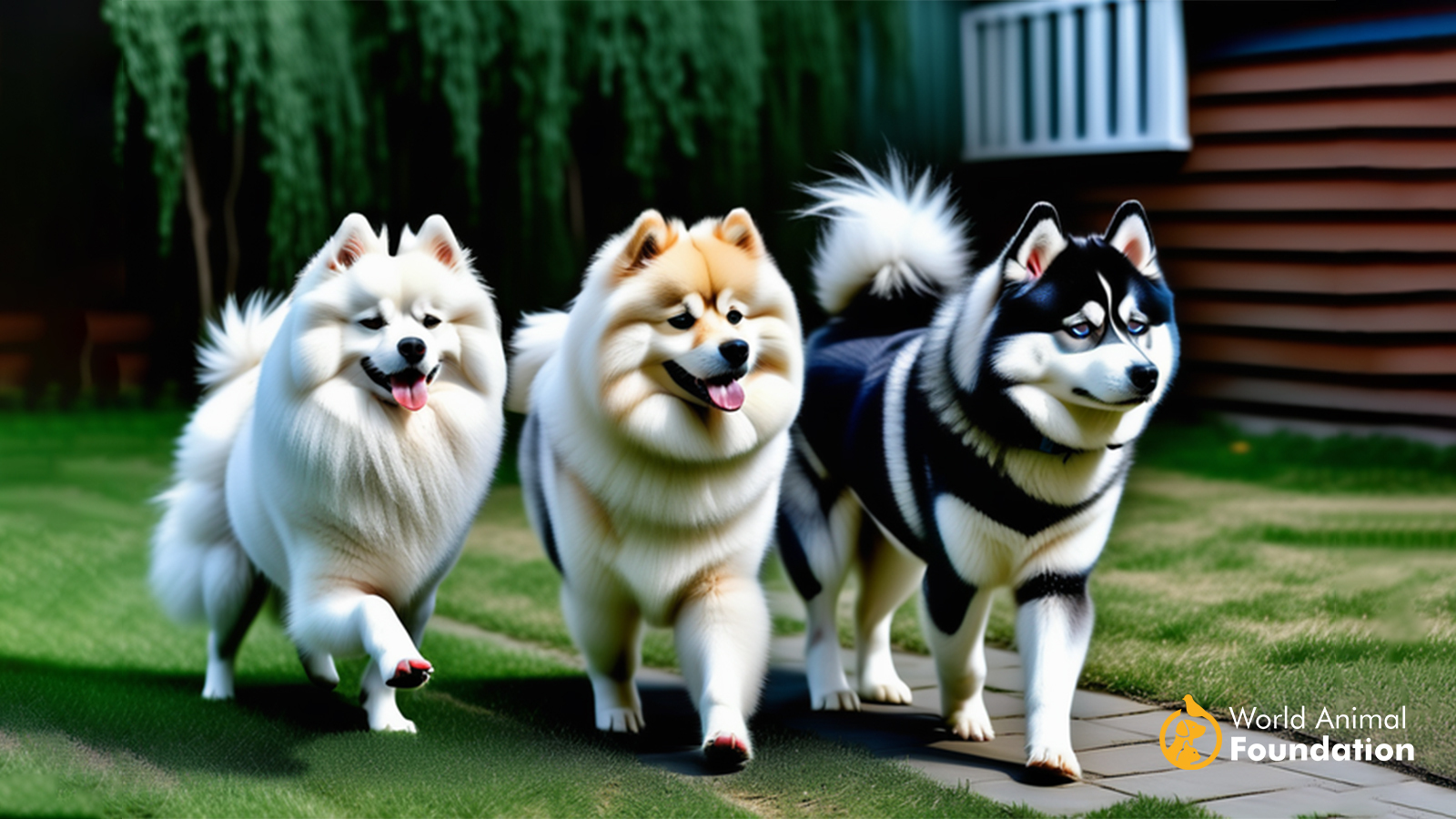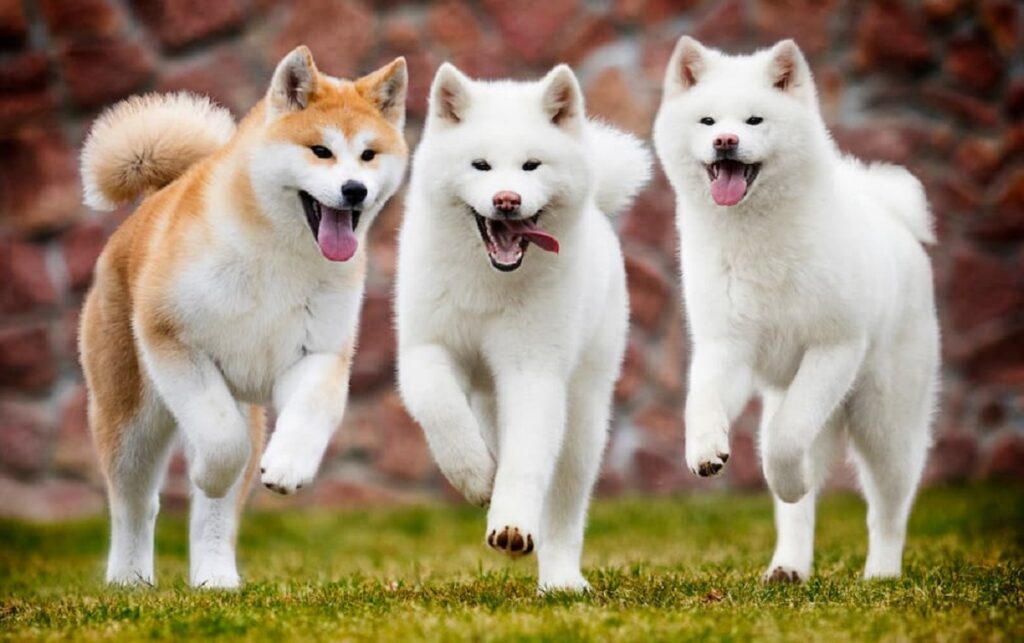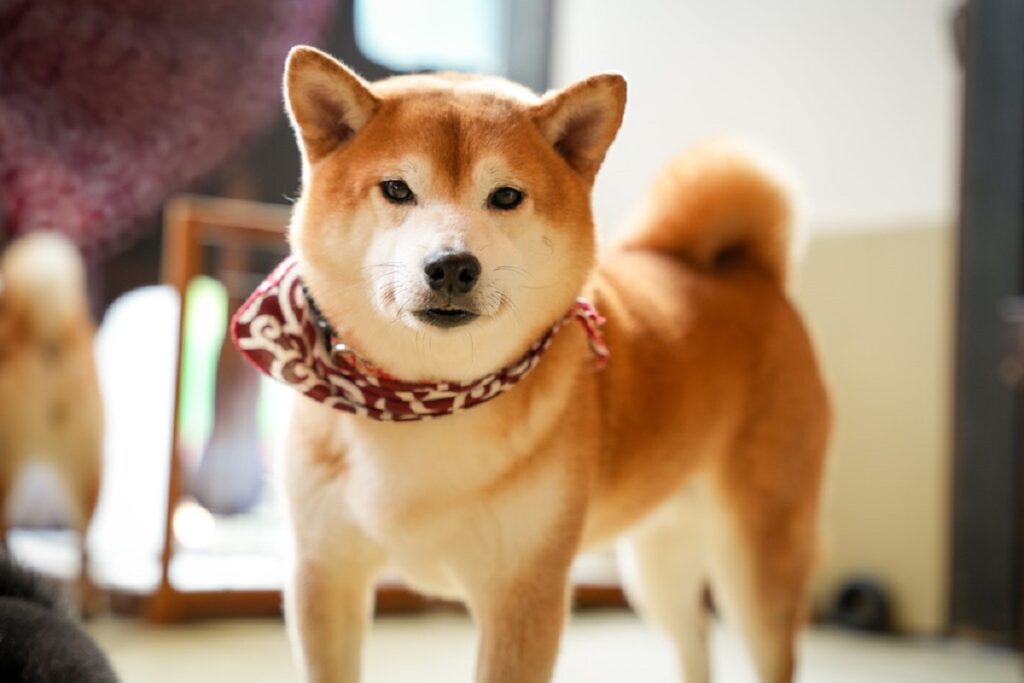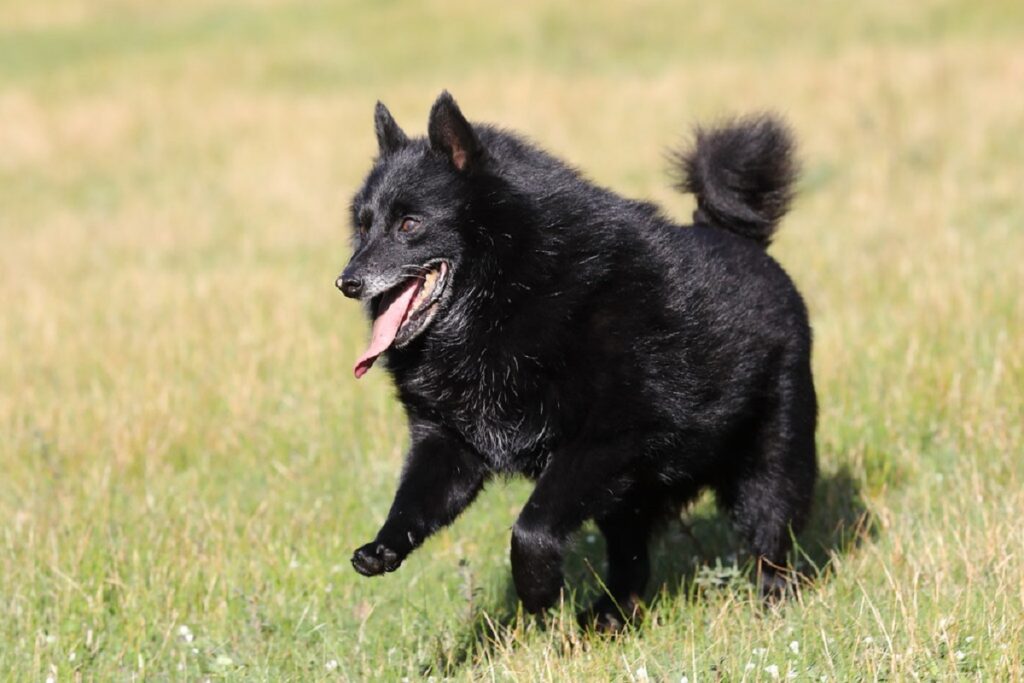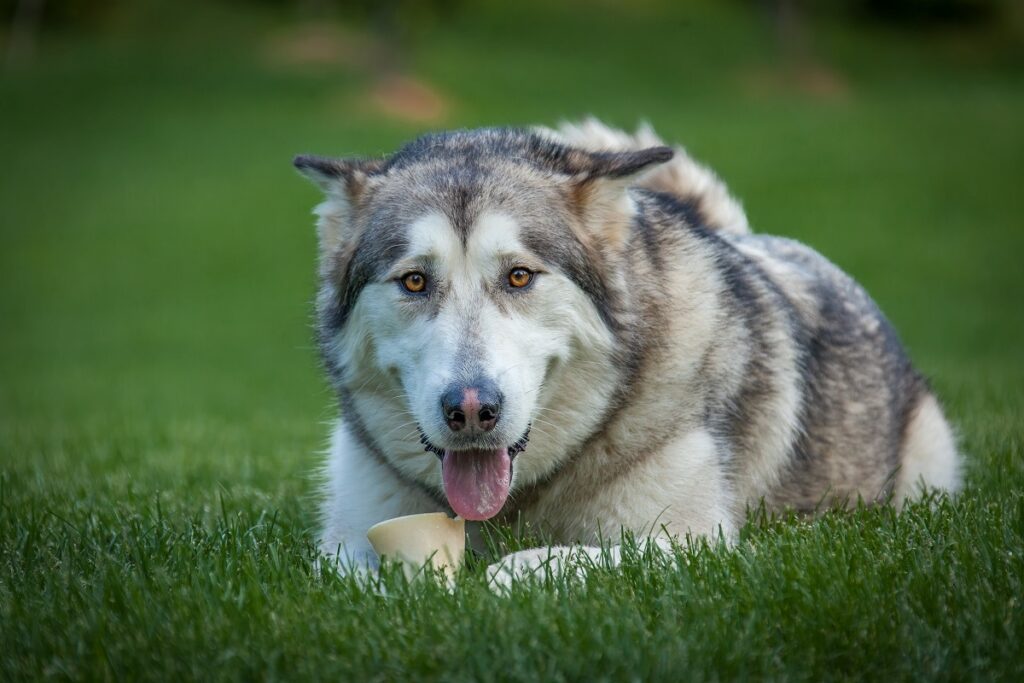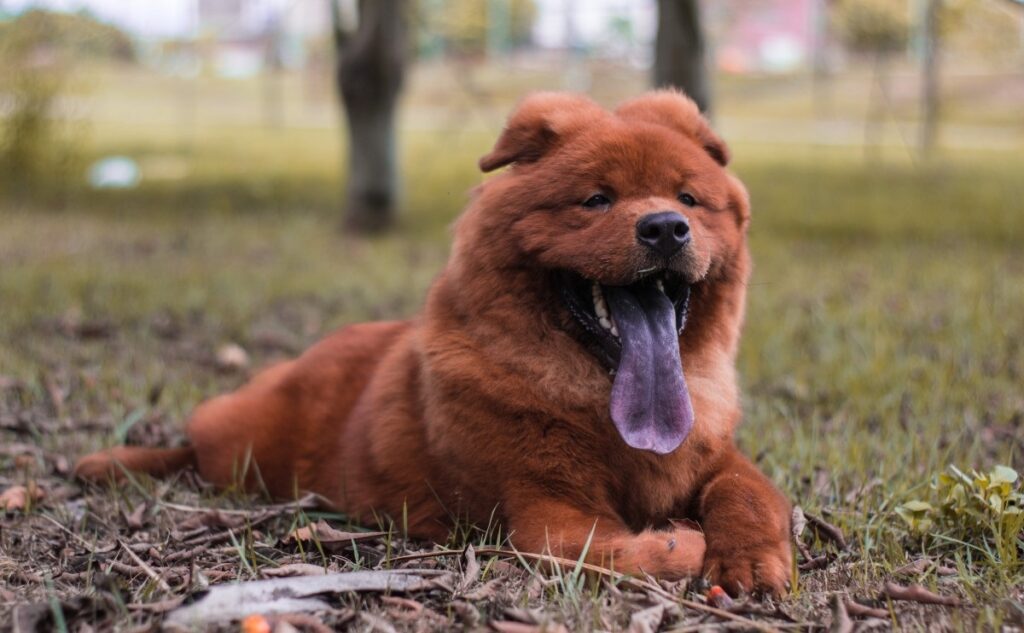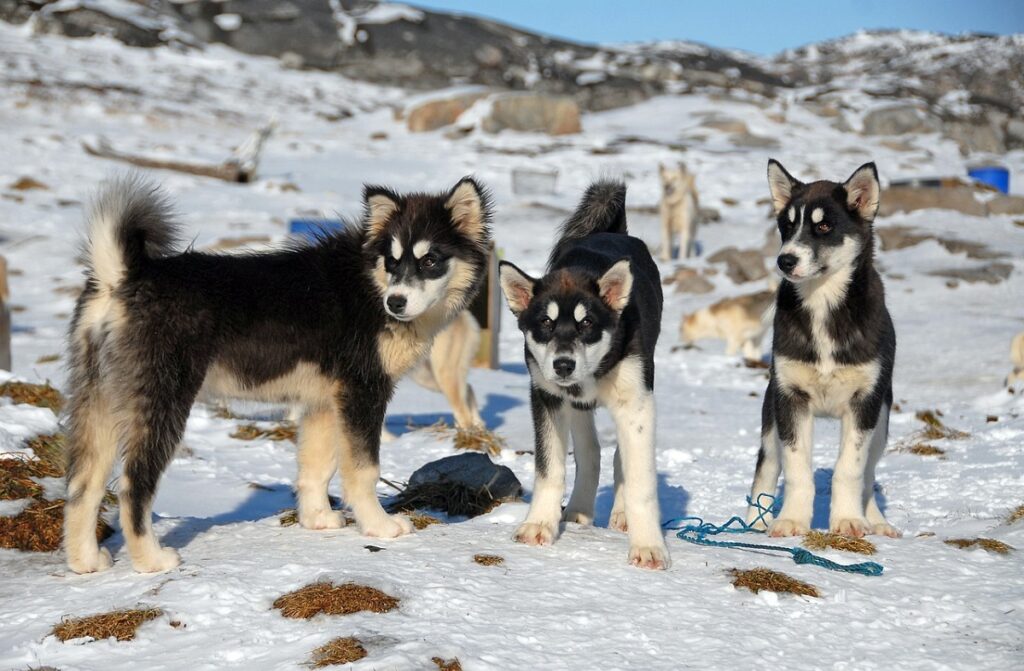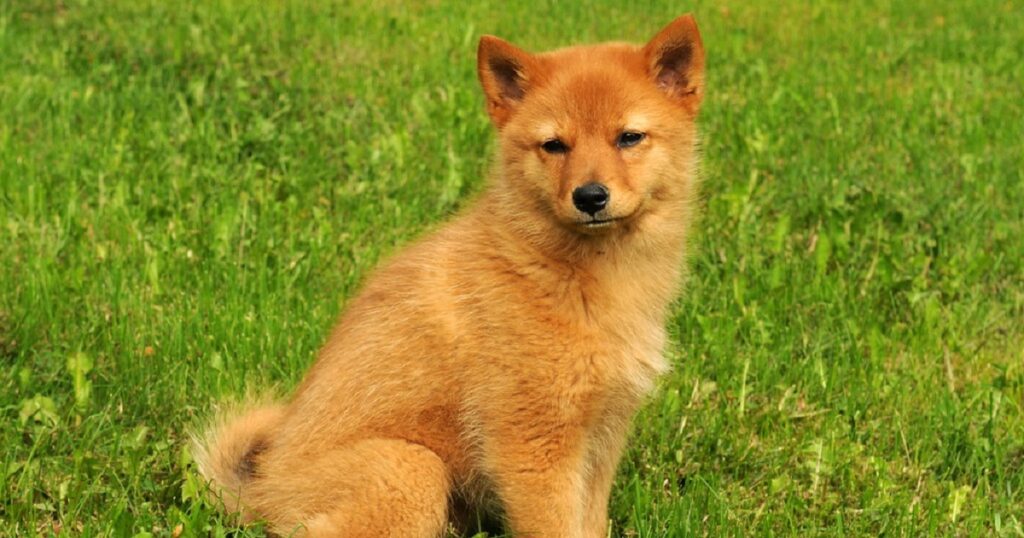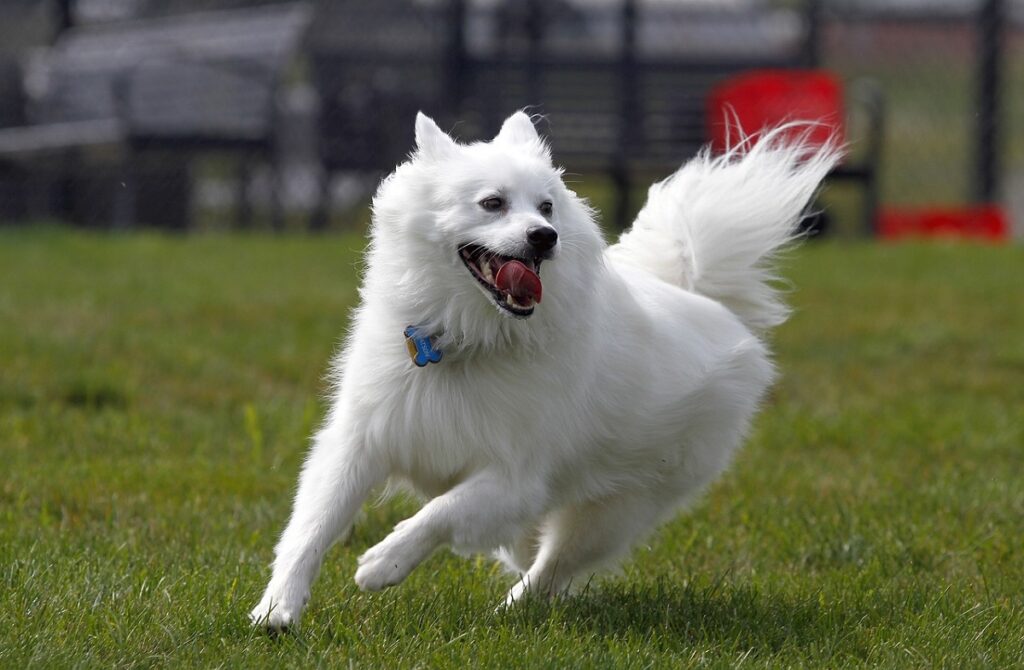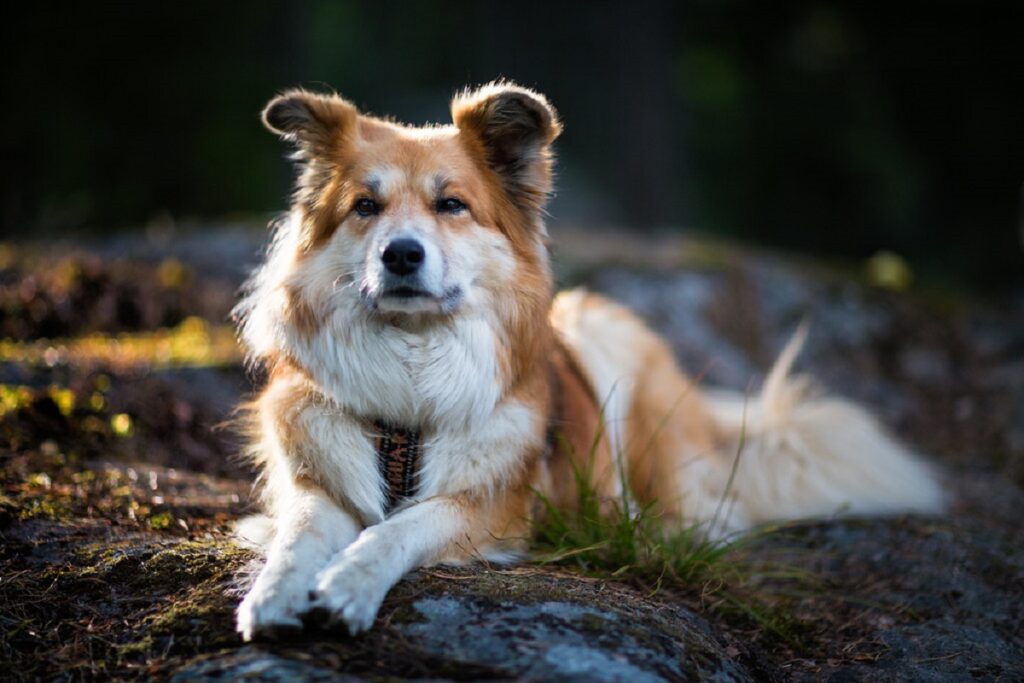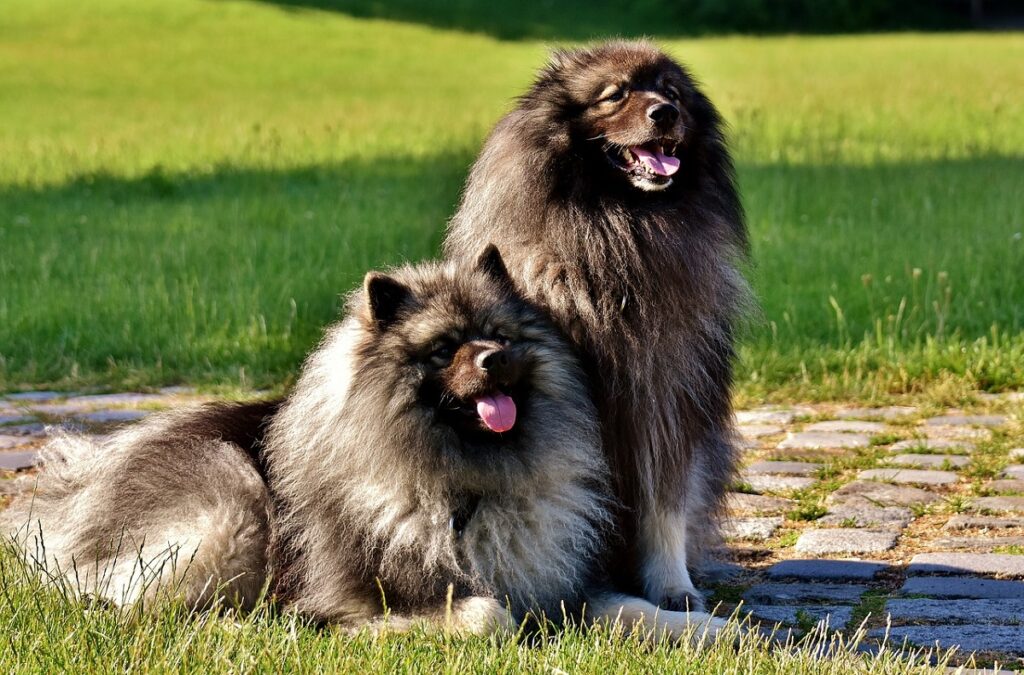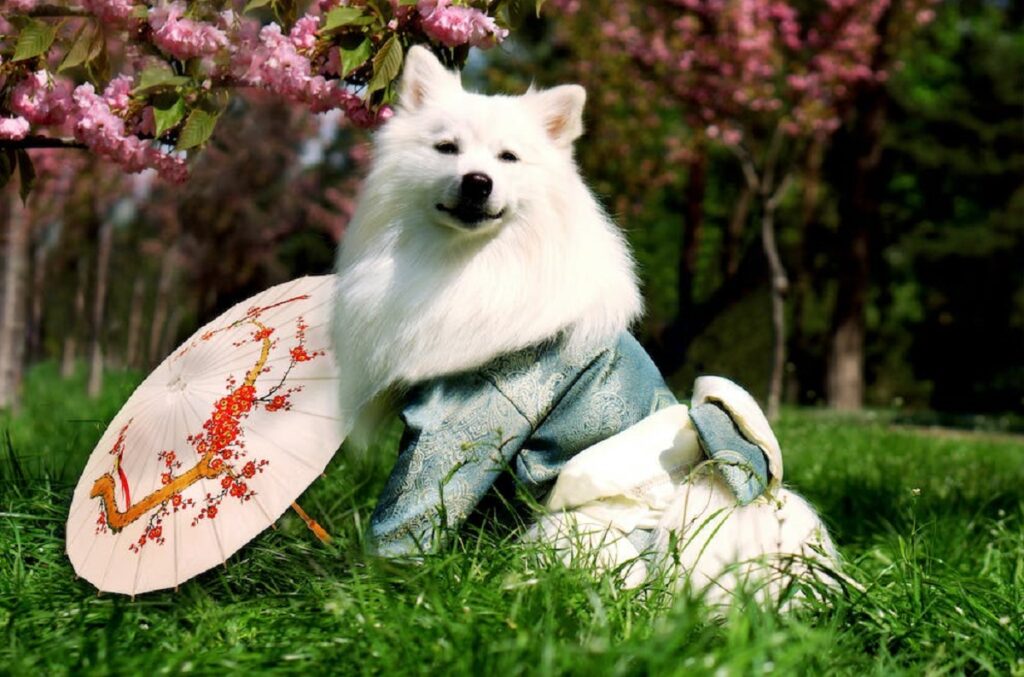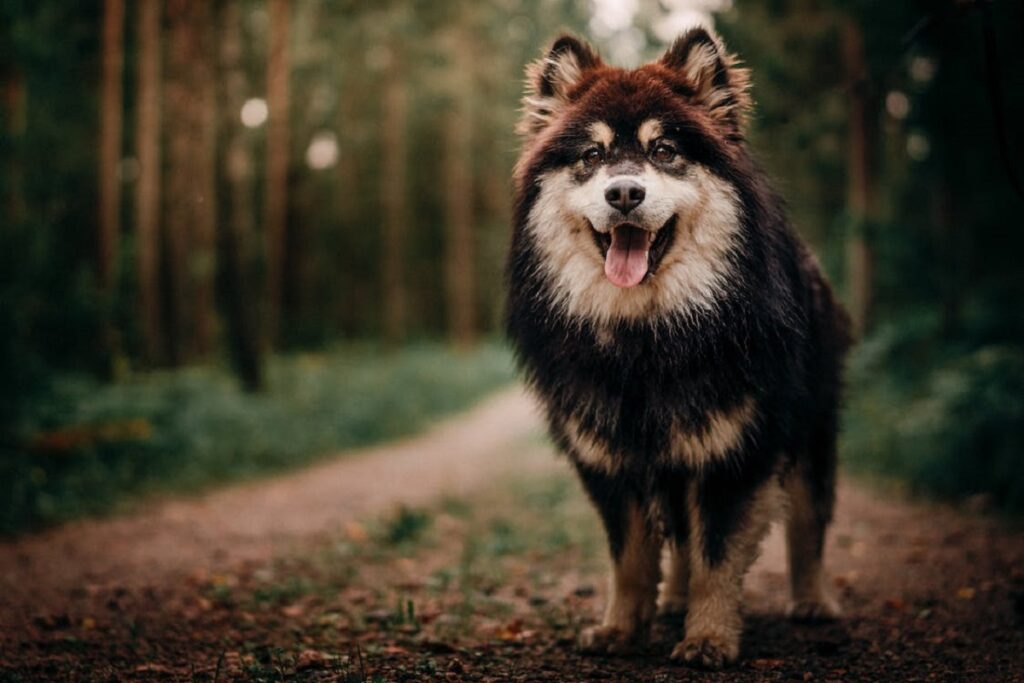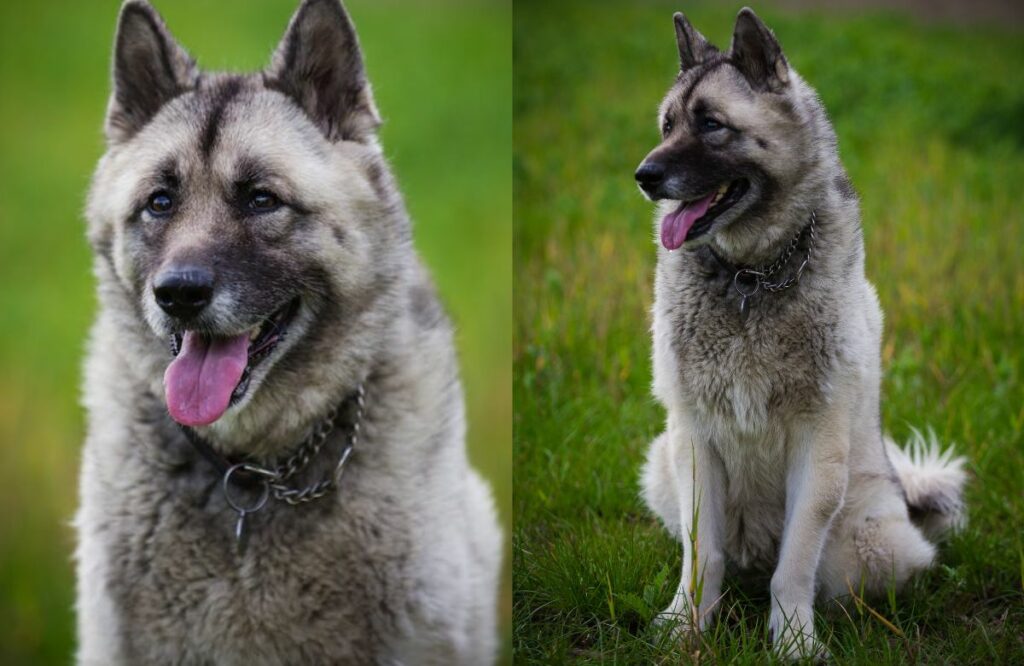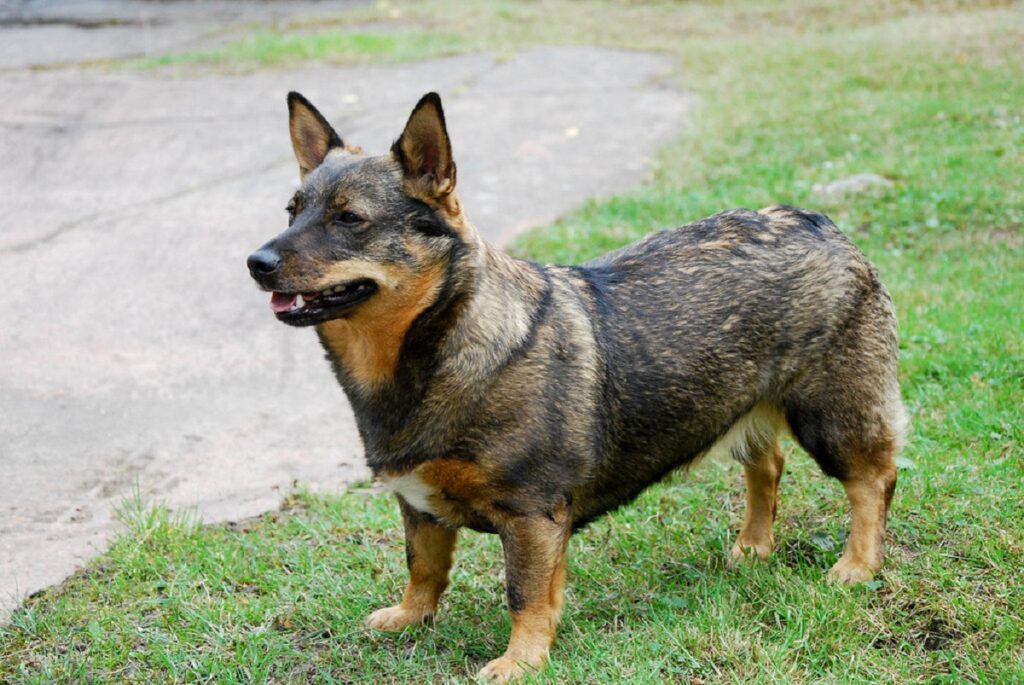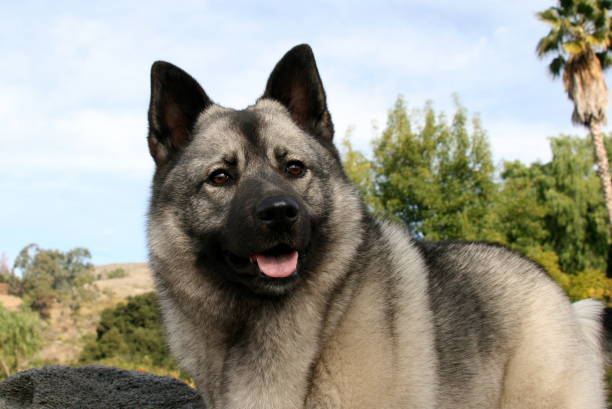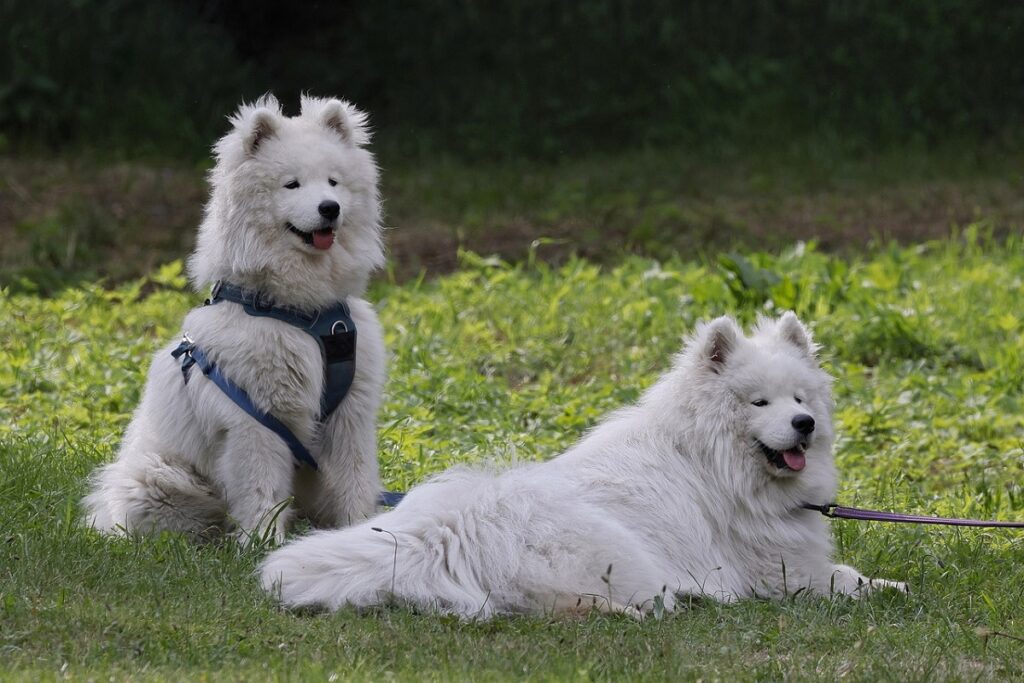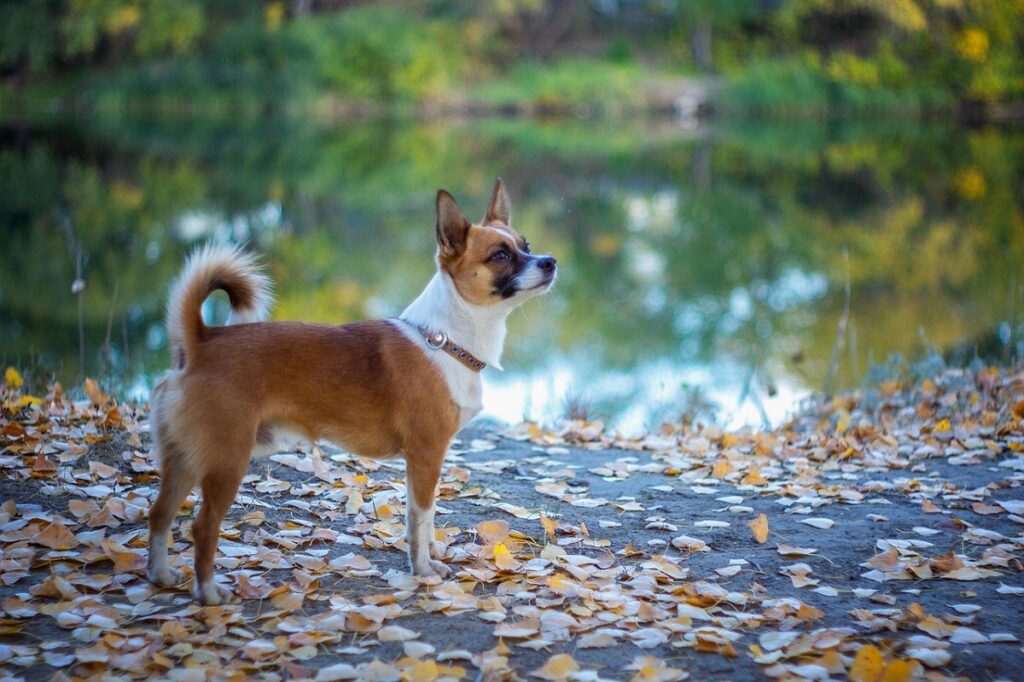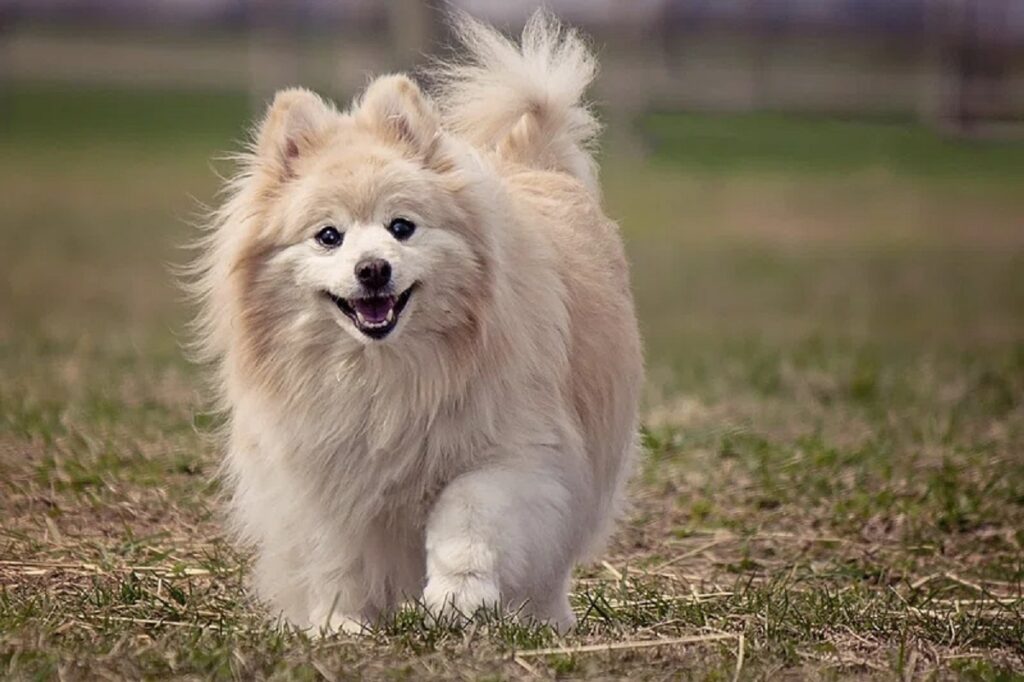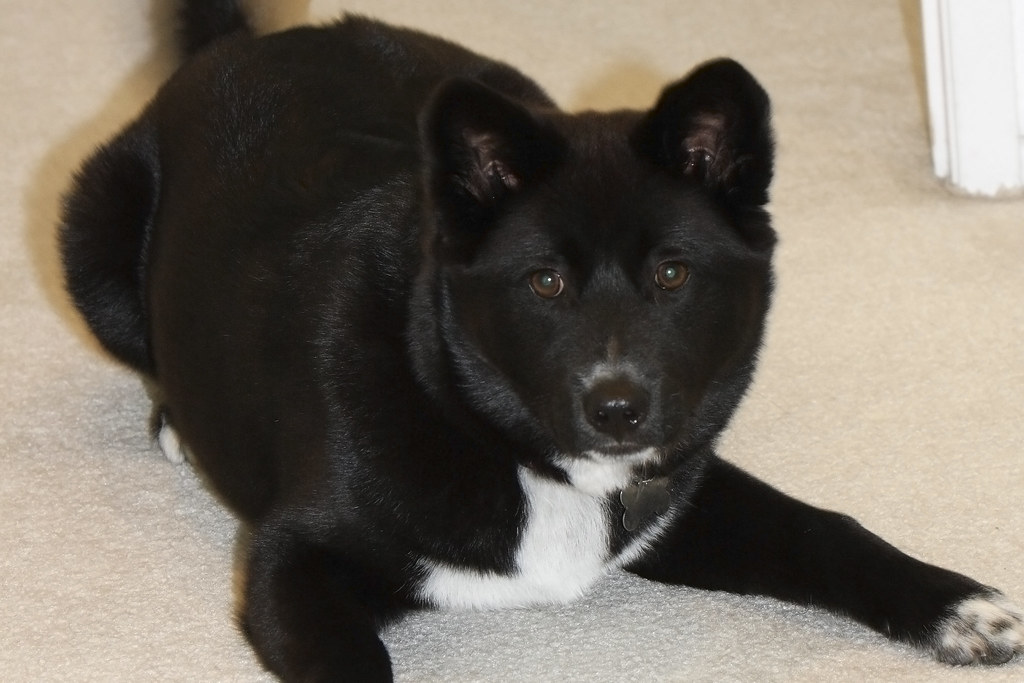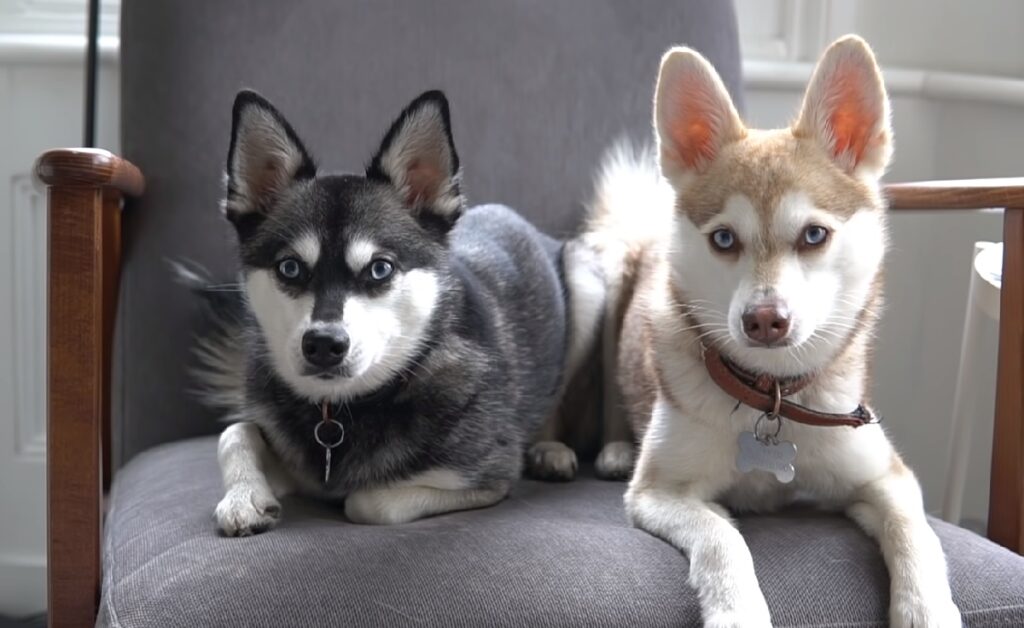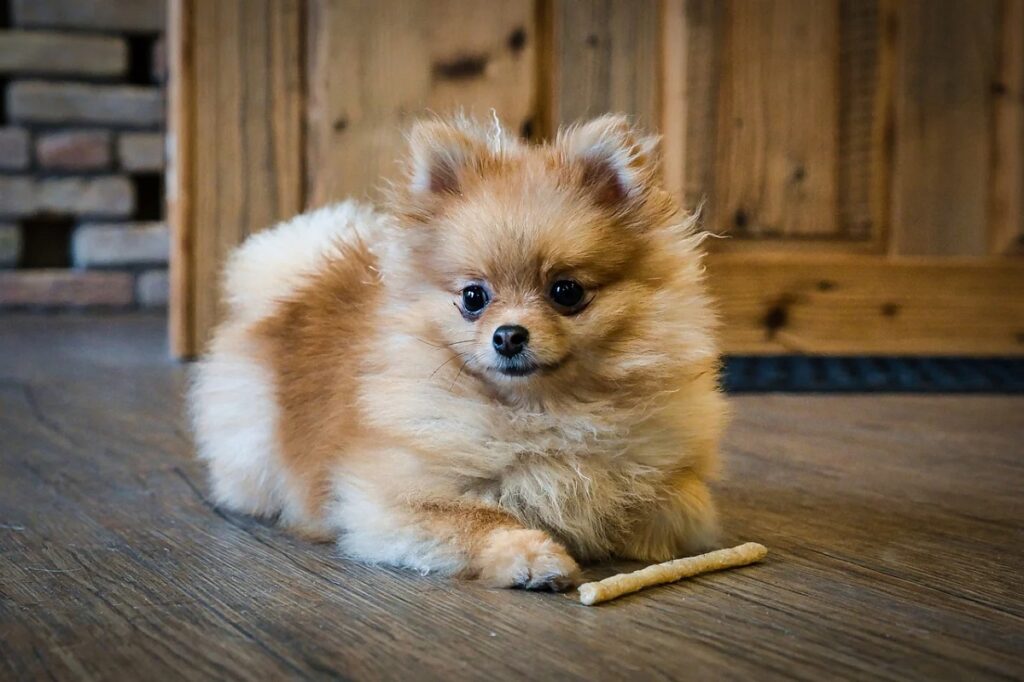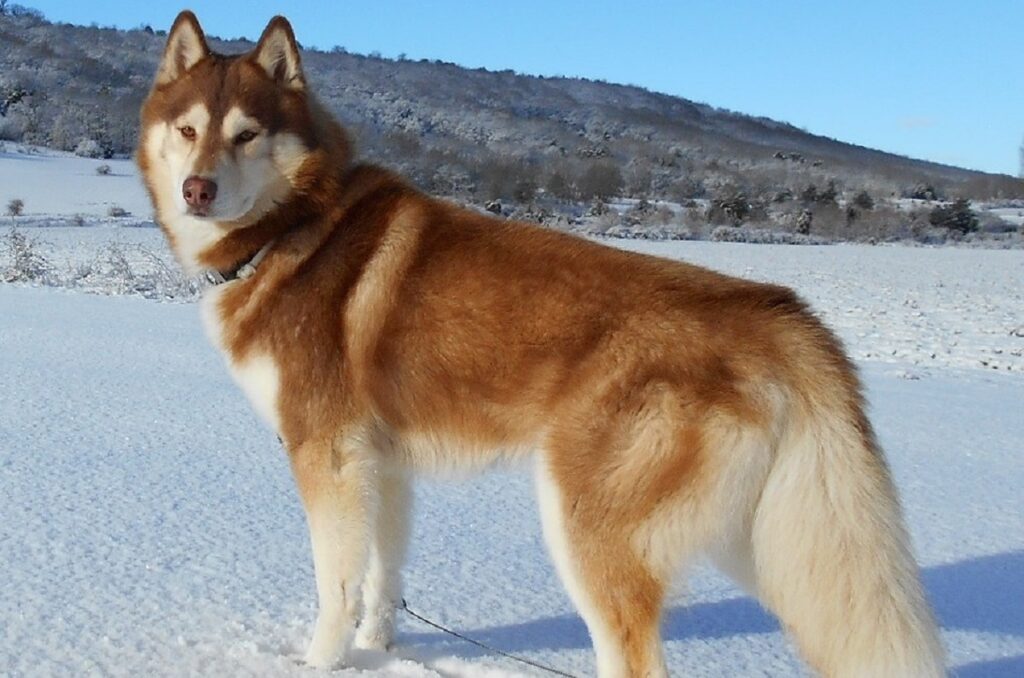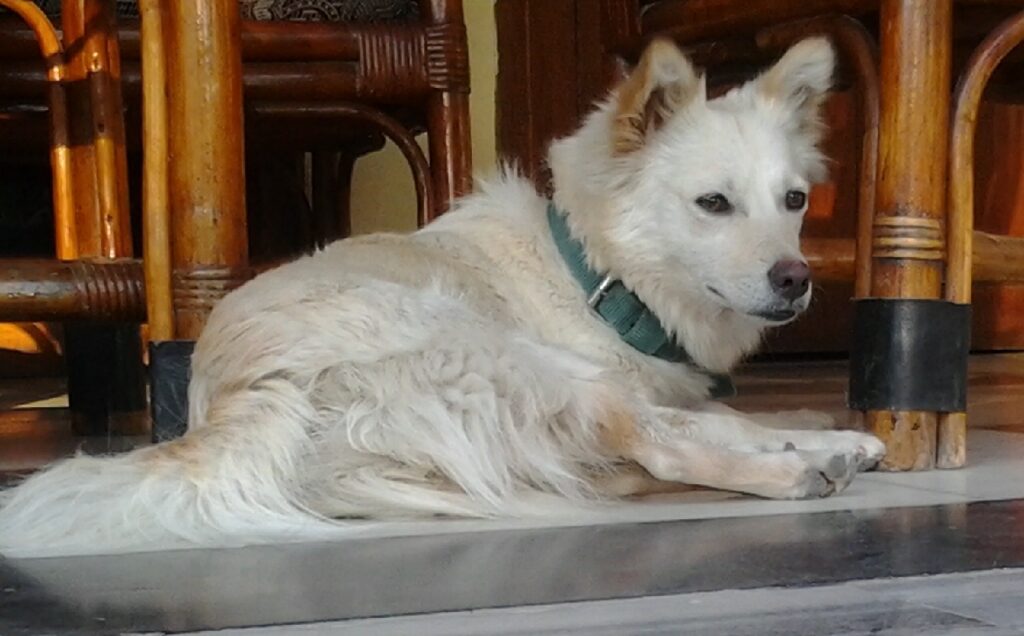With their signature foxy faces, lush coats, and spirited personalities, Spitz breeds capture hearts worldwide. This diverse group, encompassing everything from the tiny Pomeranian to the powerful Alaskan Malamute, boasts 23 distinct breeds, each with unique talents and endearing qualities. Prepare to be charmed by their intelligence, loyalty, and undeniable beauty as we explore these gorgeous, talented, and loving companions. Whether you’re seeking a playful family pet or a vigilant watchdog, there’s a Spitz breed waiting to steal your heart.
Retriever dogs, herding dogs, and hound dogs have all made their legacies known to the world, but there’s one type of dog that doesn’t get talked about a lot… Spitz dog breeds.
There’s no exact category definition of a spitz, but rather, it’s a type of dog. So what in the world are they? We’ll get hot and heavy into that as we talk about dogs like Akitas, Chow Chows, and Samoyeds. They’re just as loving as they are bold and as loyal as they are persnickety.
These dogs originated in Scandinavia, North America, Russia, and Asia. They know how to work, and they’re good at it. With a powerful need to be useful, they will become frustrated, bored, and even destructive with nothing to do.
Let’s get into these breeds to let them know they’re just as important as anyone else.
What Is a Spitz Dog?
Spitz-like dogs, with pointed ears and enough fur to make a new dog, have been around since the Neolithic period (3000 BC). In German, “spitz” means “pointed,” which might give a nod to their pointy ears.
Some of these dogs look like wolves; almost all have dense double coats with a tail that curls over the back. Many spitz breeds have working backgrounds, and they were developed to pull sleds, herd reindeer, and aid in hunting.
In the mid-1800s, Scandinavian spitz dogs probably crossed the Baltic Sea to settle there. Spitz breeds were originally called “Esquimaux” dogs, which is the former word for “Eskimo,” meaning they’re a member of a people inhabiting the Arctic (Canada, Alaska, Greenland, and Siberia).
These dogs are loyal, obedient, and affectionate and deserve recognition in the dog world.
Characteristics of Spitz Dogs
Each dog is unique, but here are some general characteristics:
- Pointed ears
- Double coats
- Working, non-sporting, foundation stock, or herding dogs
- Medium-sized
- Alert
- Communicative
- Loyal
- Courageous
- Muscular
- Curled tails
- High stamina
- High endurance
- Long lives
Spitz Dog Breeds
Now, let’s step into the world of spectacular Spitz breeds, where every wagging tail tells a story, and those perky ears aren’t just for show – they’re satellite dishes tuned into the frequency of fun!
1. Akita
| Group | Working |
| Height | 24”-28” |
| Weight | 70-130 lbs. |
| Fur & color | Double-coated – Black, fawn, red, white, brown, silver, and 14 other color combinations |
| Lifespan | 10-14 yrs. |
If dogs could be football players, the Akita should put on its helmet. These stocky, muscular dogs are buff and can look intimidating at first glance.
But when you get to know them, all bets are off… Their affectionate and loyal nature will win you over.
The Akita is an ancient Japanese dog, and their government has classified the breed as a “natural monument.” Helen Keller was gifted with one when she toured Japan and brought the first Akita to America in 1937.
2. Shiba Inu
| Group | Non-sporting |
| Height | 13.5”-16.5” |
| Weight | 17-23 lbs. |
| Fur & color | Double-coated – Black & tan, cream, red, sesame (red hair tipped with black) |
| Lifespan | 13-16 yrs. |
The Shiba Inu might remind you of a fox with its coloring and pointy ears. They’re also an ancient Japanese breed and are the smallest of the first six spitz dog breeds that were developed in Japan.
They were bred to hunt, so they’re agile, intelligent, and obedient.
In the 1950s, the Shiba Inu came to the US, and by the 80s, their popularity had started to grow. They’re now in the top 50 most popular dogs in America, and in Japan, they’re still the top dog for canine companions.
3. Schipperke
| Group | Non-sporting |
| Height | 10”-13” |
| Weight | 10-16 lbs. |
| Fur & color | Double-coated – Black, apricot, black & tan, blue, chocolate, cream, fawn, gray, red, white |
| Lifespan | 12-16 yrs. |
Most Schipperkes are black, and black dogs get a bad rap. These dogs are happy and loving and don’t have a bone in them to fear.
They do need a guardian who’s experienced with dogs since they’re independent, fearless, and curious, which can be tricky.
Make sure to obedience train them early and socialize them with people and animals from puppyhood.
4. Alaskan Malamute
| Group | Working |
| Height | 23”-25” |
| Weight | 75-85 lbs. |
| Fur & color | Double-coated – Besides white, 8 other color combinations |
| Lifespan | 10-14 yrs. |
If you’re always one who’s on the go-go and enjoy taking your dog along, this might be the perfect dog for you. They can sniff out a weak link, so unless you’re the alpha type, you may have problems with this animal.
They’re highly active and want to feel productive, so if you’re going on a hike, give him a backpack and watch him go.
Their work ethic is phenomenal. These are social dogs, and when they’re with a family member, all is right with the world.
5. Chow Chow
| Group | Non-sporting |
| Height | 17”-20” |
| Weight | 45-70 lbs. |
| Fur & color | Double-coated – Cream, red, cinnamon, black, blue |
| Lifespan | 8-12 yrs. |
These fluffy beauties are proud and nonchalant, meaning they may not snuggle up with you at exactly the time you want them to.
I had a Chow for many years, and she meant the world to me. But Mocha had her moments. She might walk in the opposite direction when I called her name or walk away while I was petting her.
All-in-all, she was a fantastic, loving companion.
6. Greenland Dog
| Group | Working |
| Height | 22”-25” |
| Weight | 66-100 lbs. |
| Fur & color | Double-coated – Combinations of white, black, brown, red, gray |
| Lifespan | Over 10 years |
The only surviving native breed in Greenland, this dog is rarely seen anywhere else. They’re known for their incredible willpower and tremendous working ability.
The Greenland dog pulls heavy sleds over long distances and lives in frigid, even dangerous weather conditions. Although they relish working, they also love their human families.
7. Finnish Spitz
| Group | Non-sporting |
| Height | 15.5”-20” |
| Weight | 20-33 lbs. |
| Fur & color | Double-coated – Red gold, red, gold |
| Lifespan | 13-15 yrs. |
Over 2,000 years ago, Finnish Spitz dogs were developed to track squirrels, rodents, and even bears. The Finkie is its nickname since his native name is Finsk Spetz, and their ancestors were developed from spitz-type dogs in Russia.
They’re wonderful with children (but supervise all dogs around them) and excel at flyball, obedience, agility, and rally. Playtime will be a blast.
8. American Eskimo Dog
| Group | Non-sporting |
| Height | 9”-12” (toy)12”-15” (miniature)15”-19” (standard) |
| Weight | 6-10 lbs. (toy)10-20 lbs. (miniature)25-35 lbs. (standard) |
| Fur & color | Double-coated – White, white & biscuit |
| Lifespan | 13-15 yrs. |
This beautiful white spitfire has a noticeable pink color on the inside of his ears. They’re descendants of the German spitz and have a loving and affectionate nature.
Always protective, you’ll feel safe with one of these dogs around.
The breed is strong and agile and fittingly called “The Dog Beautiful.”
9. Icelandic Sheepdog
| Group | Herding |
| Height | 16.5”-18” |
| Weight | 25-30 lbs. |
| Fur & color | Double-coated – 20 possible colors and color combinations |
| Lifespan | 12-14 yrs. |
The Icelandic Sheepdog breed is Iceland’s only native dog. They’re keen on herding livestock in any weather and were first brought to Iceland by the Vikings. They’ve been there for over 1,100 years.
They help Iceland’s search and rescue units and excel in avalanche searches. These dogs are obedient, easy-going, and affectionate. They’re barkers, as a herding dog often is, and able to work independently with not much guidance.
10. Keeshond
| Group | Non-sporting |
| Height | 17”-18” |
| Weight | 35-45 lbs. |
| Fur & color | Double-coated – Black, tawny, silver, white, wolf gray and 6 other possible color combinations |
| Lifespan | 12-15 yrs. |
The Keeshond looks like it put its paw in a light socket and went poof! They’re striking creatures with fluffy hair. This breed served time on barges in Holland as watchdogs, and when they arrived in the UK, they were called the “Dutch Barge Dog.”
Declared the mascot by the Dutch Patriots’ Party in the 18th century, a party leader named Cornelius (‘Kees’) de Gyselaer had one, and it became “Kees’ Dog” or Keeshond.
Although the breed’s numbers dramatically declined in 1787, they sparked again in the UK. In 1933, the breed was recognized by the Dutch Kennel Club.
11. Japanese Spitz
| Group | Foundation stock |
| Height | 12”-15” |
| Weight | 10-25 lbs. |
| Fur & color | Double-coated – White |
| Lifespan | 10-14 yrs. |
This little fluffball gels well with cats, kids, seniors, and dogs. They’re just all-around friendly. Highly adaptable, loyal, and playful, they were bred from the German spitz.
This Japanese dog breed looks similar to the Pomeranian, are prone to anxiety, and are very intelligent. They’re active, so get ready to frequent the dog park and exercise him daily.
12. Finnish Lapphund
| Group | Herding |
| Height | 16”-21” |
| Weight | 33-53 lbs. |
| Fur & color | Double-coated – Black, brown, blonde, tan, cream, blue, brindle, wolf sable, saddle (black and tan) |
| Lifespan | 12-15 yrs. |
One of Finnland’s most popular dog breeds, this breed originated to hunt, guard, and herd reindeer for indigenous Sami tribes in Lapland. Loving, active, and friendly, they make excellent family dogs but need a lot of space to roam around in.
Just as with other spitz-type dogs, their double coats keep them nice and warm in frigid temperatures.
13. Norwegian Buhund
| Group | Herding |
| Height | 16”-18.5” |
| Weight | 26-40 lbs. |
| Fur & color | Double-coated – Wheaten, black |
| Lifespan | 12-15 yrs. |
This spitz dog breed is also called the Norsk Buhund (boo-hund) or the Norwegian sheepdog. Archaeological evidence shows they’ve been around since at least 900 AD. Canine skeletons have even been found in a Viking grave.
Playful dogs, they love being around their guardians and children. They’re intelligent and easy to train, but don’t let them get bored, or you could see destructive behavior. Keep them busy.
14. Swedish Vallhund
| Group | Herding |
| Height | 11.5”-14” |
| Weight | 20-35 lbs. |
| Fur & color | Double-coated – Gray, yellow, red, black, blue, white |
| Lifespan | 12-15 yrs. |
This Viking dog breed is a cattle dog that is friendly and known for their unique vocalizations.
They worked on Viking ships 1,200 years ago and are built to be low to the ground. Their distant cousins are Corgis, and their power, smooth movements, and balance made them the perfect dog for the job of herding.
Puzzle games and participating in a sport can keep this breed happy and healthy. One important note: Some Vallhunds are quite active, and some are less. It’s important to know the dog type you’ll be getting.
15. Norwegian Elkhound
| Group | Hound |
| Height | 19.5”-20.5” |
| Weight | 48-55 lbs. |
| Fur & color | Double-coated – Gray, black, & silver, silver gray, & black, gray & black, silver & black, black, white, & silver, black & gray, black & silver |
| Lifespan | 2-15 yrs. |
Fearless, athletic, and alert, the Elkhound is also extroverted, protective, and loyal. They can be territorial with other cats and dogs since they’re hounds, but early socialization will help them be more welcoming. Excellent guard, sled, hunting, and herding dogs; they’re the national dog of Norway.
Popular for their silver-gray coats, this breed is among the oldest dog breeds in Europe. They’re muscular, sturdy, and alert. Their independence can be a tough obstacle in obedience training, so let them know you’re in charge. Wonderful watchdogs, they’re also known to be athletic and eager to please.
Protectors of remote farms, they excel as herders and guard dogs from bears and wolves. Having been around for more than six millennia, they’re hardy and fearless, which has come in handy.
The Vikings were proud guardians, and archeology shows just that from being buried alongside their coveted breed.
16. Samoyed
| Group | Working |
| Height | 19”-23.5” |
| Weight | 35-65 lbs. |
| Fur & color | Double-coated – White, biscuit, cream, white & biscuit |
| Lifespan | 12-14 yrs. |
The Samoyed is a social animal that gets along with his canine pack and people pack. Known for their big smiles and stunning white coats, they can’t get enough love and attention.
Their name comes from an Asian nomadic tribe, the Samoyede, who migrated to Siberia 1,000 years ago.
17. Norwegian Lundehund
| Group | Non-sporting |
| Height | 12”-15” |
| Weight | 12-18 lbs. |
| Fur & color | Double-coated – Reddish brown, white, sable & white, fallow (light yellowish-brown), tan |
| Lifespan | 12-15 yrs. |
This spitz dog breed is also called the “Norwegian Puffin Dog” due to its ability to travel up crevices to hunt the puffin bird.
The breed’s claim to fame is their six fully developed toes on each paw, compared to the five of other dogs. The term(s) for having six toes is Polydactyly or polydactylism.
18. German Spitz
| Group | Foundation stock |
| Height | Toy – 8”-12”, Medium – 12”-16”, Large – 16”-20” |
| Weight | Toy – 10-11 lbs., Medium – 15-25 lbs., Large – 30-50 lbs. |
| Fur & color | Double-coated – Black, black & tan, brown, cream, orange, red, white, wolf gray |
| Lifespan | 13-15 yrs. |
These energetic dogs love to bark, so early training is key to let them know what’s worthy of alerting you and what’s not. This spitz breed is adaptive, friendly, and independent and makes excellent family companions.
19. Korean Jindo
| Group | Foundation stock |
| Height | 17”-22” |
| Weight | 30-50 lbs. |
| Fur & color | Red fawn, white, black, black and tan, wolf grey, and brindle |
| Lifespan | 4-15 yrs. |
These popular pets in South Korea have a history of being bred for consumption, which has made activists stand up to save them from the dog meat trade.
They’re highly intelligent and really just want to be part of interacting with a human family. They’re not well known in the US but are getting more attention due to their horrendous situation.
20. Alaskan Klee Kai
| Group | Foundation stock |
| Height | 12”-17” |
| Weight | 6-25 lbs. |
| Fur & color | Double coated – Black & white, gray & white, red & white |
| Lifespan | 13-16 yrs. |
These little guys are easy-going and are descendents of Alaskan huskies. It’s where they picked up their amazing work ethic, hunting and tracking abilities, and even sled-pulling capabilities. They’re definitely athletes.
Their small size – think husky mini-me – and adorable faces make them sought after as family pets.
21. Pomeranian
| Group | Toy |
| Height | 6”-7” |
| Weight | 3-7 lbs. |
| Fur & color | Double-coated – 24 possible colors and color combinations |
| Lifespan | 12-16 yrs. |
The famous Pomeranian! This popular breed makes wonderful watchdogs and is easily trained. They’re a barking bird dog, so remember that when choosing and training them.
The smallest of the spitz breeds, they’re named after Pomerania, which is now Poland and Germany. Queen Victoria jump-started their popularity when she returned from Italy to the UK with one in tow.
More than a lapdog, this breed is intelligent dogs and easily trained. They can show you that they do well with obedience training and socialize early.
22. Siberian Husky
| Group | Working |
| Height | 20”-23.5” |
| Weight | 35-60 lbs. |
| Fur & color | Double-coated – 9 possible colors and color combinations |
| Lifespan | 12-14 yrs. |
This spitz dog breed, a husky, gets along with dogs, young children, and other family members. They were developed by the Chukchi tribe in Siberia to pull heavy loads and have high endurance and tolerance of harsh weather.
From their original home, the native dog breed of Siberia was imported to Alaska in 1909 to be used as sled dogs.
Take them along on long hikes and runs to make sure they get their daily exercise. These dogs won’t quit.
23. Indian Spitz
| Group | Utility |
| Height | Smaller – 8.5”-10”,Bigger – 14”-17.5” |
| Weight | Smaller – 11-15 lbs, Bigger – 26-44 lbs. |
| Fur & color | Double-coated – Liver, black & tan, white & tan |
| Lifespan | 13-15 yrs. |
A phenomenal hunter, take this dog along for the hunt, and remember, he’s a barker. They became famous in India during the 1980s and 1990s. The country had imposed strict rules on importing breeds.
Highly adaptable, they’ll get on well in large and small homes; plus, they’re low maintenance but also high-spirited and vocal. They will guard the property like they are a larger breed.
Breeds To Avoid
Just like with any dog breed, you need to look for a companion that has a similar lifestyle to yours. If you love activity and go for runs or hikes, malamutes or huskies are the way to go, but others are less active.
Also, spitz breeds are double-coated, so while they’re beautiful dogs, they blow (shed) their coats twice yearly, and it’s quite a spectacle. If you have allergies, although no dog is totally hypoallergenic, try to avoid double-coated breeds if you can.
If you’re close to neighbors or don’t want a lot of barking, the Finnish spitz would probably not be the perfect choice either since they do enjoy being vocal.
Just keep in mind the traits/characteristics of the type of dog you’ll be getting to match you perfectly. Since all dogs are unique, this would require spending some time with a dog (foster or a sit-down visit) to choose the dog of your dreams.
FAQ’s
Which Spitz Dog Breeds Tend To Be More Compatible With Cats?
Practically all spitz breeds have strong prey drives and will need early socialization (being around people and other animals) to quell their instincts.
Where Are Spitz Dogs From?
Spitz breeds are largely descendants of Arctic dogs – Scandinavia, North America, Russia, and Asia: Canada, Alaska, Greenland, and Siberia.
Are Spitz Dogs Good Pets?
Most Spitz breeds make incredible pets. Their loyalty, affection, and need to be around people make them excellent choices for families.
Why Were Spitz Dogs Selectively Bred?
Being from the Arctic required spitz dogs to be great at:
1. Pulling loads
2. Being obedient
3. Having high stamina and endurance
4. Having thick coats to stay warm
5. Being hunters
6. Being guardians
7. Being great around people
And so they were selectively bred for these purposes.
Wrap-up
According to the American Kennel Club, Spitz dog breeds are gorgeous, spunky, and hard-working animals. They need structure, discipline (non-threatening), and guidelines (positive reinforcement) to be the best they can be.
If you’d love a dog with a long lifespan (relatively speaking) and is active, this is one to consider. They may not be good with small pets and may have a tendency to show separation anxiety, so keep these things in mind. The right person is, well, the right person for these breeds.
Keeping up with your spitz dog might be your greatest difficulty, so be sure to recognize their energy levels.
Just remember to put your skates on.
Spitz breeds, with their signature fluffy coats, curled tails, and fox-like faces, offer a diverse range of captivating companions. From the diminutive Pomeranian to the powerful Alaskan Malamute, these intelligent and energetic dogs bring unique personalities and talents to the table. Whether you’re seeking an adventurous hiking partner or a cuddly lap dog, a Spitz breed likely exists to fulfill your desires. While their independent nature requires dedicated training, the loyalty and love offered by these gorgeous dogs make them truly rewarding additions to any family.

